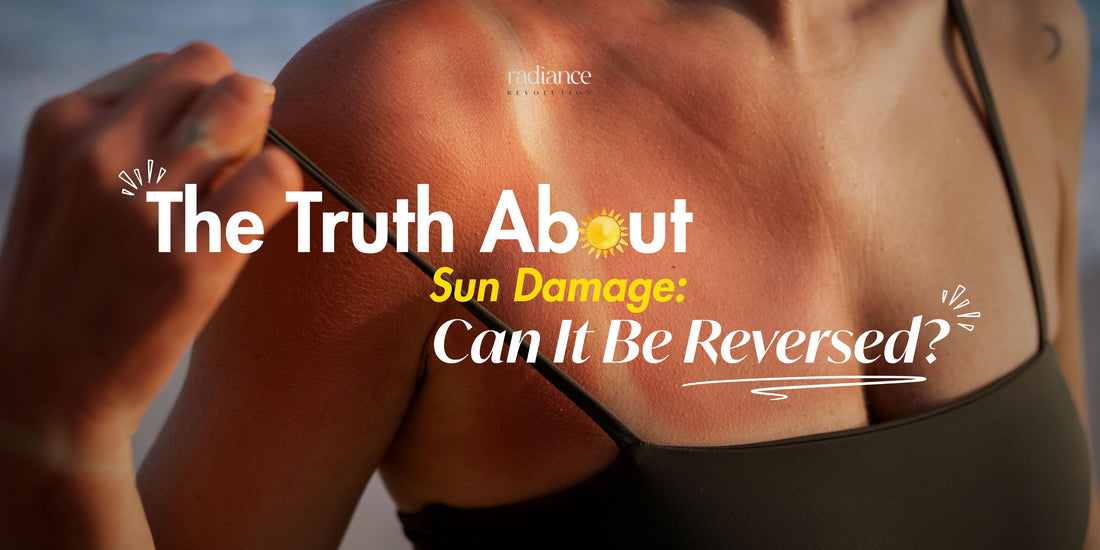
Share
The Truth About Sun Damage: Can It Be Reversed?
It’s a question we've all asked ourselves while looking in the mirror: After years of enjoying the sun, are those fine lines and sunspots a permanent part of our story? The truth about sun damage is both complex and hopeful. While we can't completely erase every bit of cellular damage, the answer is a resounding "yes"—you can significantly improve the appearance of sun-damaged skin.
This isn't about turning back the clock entirely, but about giving your skin the tools to repair itself and prevent further harm. The key lies in a consistent, two-pronged approach: prevention and targeted treatment.
What Exactly is Sun Damage?
Before we talk about reversal, let's understand the enemy. Sun damage, or photoaging, is caused by the sun's ultraviolet (UV) rays. UVA rays penetrate deep into the dermis, where they break down collagen and elastin, leading to wrinkles and sagging. UVB rays, meanwhile, are responsible for sunburn and play a key role in the development of skin cancers. Both types of UV light trigger the production of excess melanin, leading to dark spots and an uneven skin tone.
This constant assault of free radicals from UV exposure can cause long-term, visible changes to your skin. But this doesn’t mean you’re stuck with them.
The Two Pillars of Repair: Prevention & Treatment
Pillar 1: Prevention
You cannot effectively repair sun damage if you are not actively preventing new damage from occurring every single day. Think of it as patching a leaky roof while it’s still raining—it won’t work. The most critical step in your routine, no matter your skin concern, is a high-quality, broad-spectrum sunscreen. It's your daily defence against the very rays that cause damage.
Pillar 2: Targeted Treatment
This is where you give your skin the active ingredients it needs to regenerate and fade existing damage.
Retinoids (Vitamin A): Considered the gold standard in dermatological circles, retinoids work by accelerating cell turnover and boosting collagen production. This helps to smooth out fine lines and improve overall skin texture. Consistency is key here—start slow and use it at night to allow your skin to adjust.
Vitamin C: This powerful antioxidant is your best friend when it comes to hyperpigmentation. Vitamin C helps to neutralise free radicals, but it also inhibits the enzyme responsible for melanin production. Over time, it can visibly brighten your complexion and fade stubborn sunspots.
AHAs (Alpha Hydroxy Acids): Ingredients like glycolic acid and lactic acid are chemical exfoliants. They gently dissolve the bonds holding dead, damaged skin cells together on the surface, revealing the brighter, healthier skin underneath. Regular exfoliation can significantly improve skin texture and tone.
Sun damage doesn't have to define your skin's future. With the right preventative measures and a smart, ingredient-focused routine, you can begin the journey to a brighter, more even complexion.



